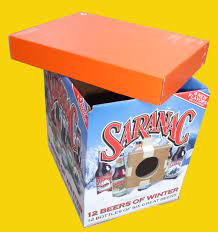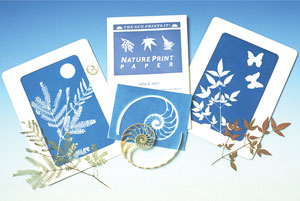
Here’s what customers are saying about some of their favorite ultraviolet light materials.
If you have a favorite Educational Innovations product, let us know! We’d love to share your review with your fellow teachers and science lovers.

Here’s what customers are saying about some of their favorite ultraviolet light materials.
If you have a favorite Educational Innovations product, let us know! We’d love to share your review with your fellow teachers and science lovers.
 By: Donna Giachetti
By: Donna Giachetti
Heading to LaGuardia airport for my first science convention, I was reminded of my first day of kindergarten. Instead of a shiny new lunchbox, I toted a battered old suitcase but otherwise, it felt much the same. My first convention! Would I make friends? Would there be name tags? Bathroom breaks? Worst of all, would I get lost?
When I joined Educational Innovations in September 2014, my new colleagues tried to describe the magic and mayhem that occurs at science conventions. “You’ll see,” I heard more than once. They tossed around terms like “regionals” and “nationals” as if they were talking about March Madness.
I listened to their stories wondering when I would get my turn to become part of the larger-than-life Educational Innovations convention crew. And then, in mid-November, my moment arrived. CAST—the Conference for the Advancement of Science Teaching—would be my initiation into the world of science teachers.
 by: Tami O’Connor
by: Tami O’Connor
The sun is our primary source of ultraviolet radiation, however, there are a number of artificial sources of UV light including black lights, tanning beds and mercury vapor lamps. Ultraviolet radiation is usually considered to be a bad thing for very good reasons.
Generally speaking, there are three types of UV radiation here on Earth: UVA, UVB and UVC. Though the most destructive, UVC is almost never seen in nature because the earth’s atmosphere absorbs all of it. Though less destructive, overexposure to UVB can lead to all kinds of maladies including sunburn, some forms of skin cancer and cataracts. Read the rest of this entry »
 by: Martin Sagendorf
by: Martin Sagendorf
Taking a photo in the UV is relatively easy and produces a somewhat different view of what we see in visible light. All that’s required is a small bi-convex lens, a cardboard box, some pieces of thin cardboard, a pack of ‘Sun Paper’, and patience.
 As we know, sunlight contains ultraviolet, visible, and infrared ‘colors’, and we can ‘see’ only the middle wavelengths of this ‘optical spectrum’. Infrared is invisible, but we feel it as heat and likewise, at the other end of the spectrum (at much shorter wavelengths), the ultraviolet radiation is also invisible, but it is very energetic and damaging (as shown by the fading of paint and our sunburned skin).
As we know, sunlight contains ultraviolet, visible, and infrared ‘colors’, and we can ‘see’ only the middle wavelengths of this ‘optical spectrum’. Infrared is invisible, but we feel it as heat and likewise, at the other end of the spectrum (at much shorter wavelengths), the ultraviolet radiation is also invisible, but it is very energetic and damaging (as shown by the fading of paint and our sunburned skin).
So the question is, “How can we see UV?” Well, we can’t do so directly, but we can use a special paper having a chemical coating that’s particularly sensitive to UV. It is the same type of paper that was used with blueprint machines using a UV lamp and ammonia fumes to copy drawings made on transparent paper.
 For our box camera we’ll use a very special paper, a lens, and plain tap water, and a box. The paper is inexpensive as is the lens, and the cardboard box is free-for-the-finding. Read the rest of this entry »
For our box camera we’ll use a very special paper, a lens, and plain tap water, and a box. The paper is inexpensive as is the lens, and the cardboard box is free-for-the-finding. Read the rest of this entry »
Ultraviolet detecting beads contain pigments that change color when exposed to ultraviolet light from the sun or certain other UV sources. The electromagnetic radiation needed to affect change is between 360 and 300 nm in wavelength. This includes the high-energy part of UV Type A (400-320 nm) and the low energy part of UV Type B (320-280 nm). Long wave fluorescent type black lights work well; incandescent black lights and UV-C lamps will not change the color of the beads.
The dye molecules consist of two large, planar, conjugated systems that are orthogonal to one another. No resonance occurs between two orthogonal parts of a molecule. Imagine two planes at right angles to one another, connected by a carbon atom. When high energy UV light excites the central carbon atom, the two smaller planar conjugated parts form one large conjugated planar molecule. Read the rest of this entry »